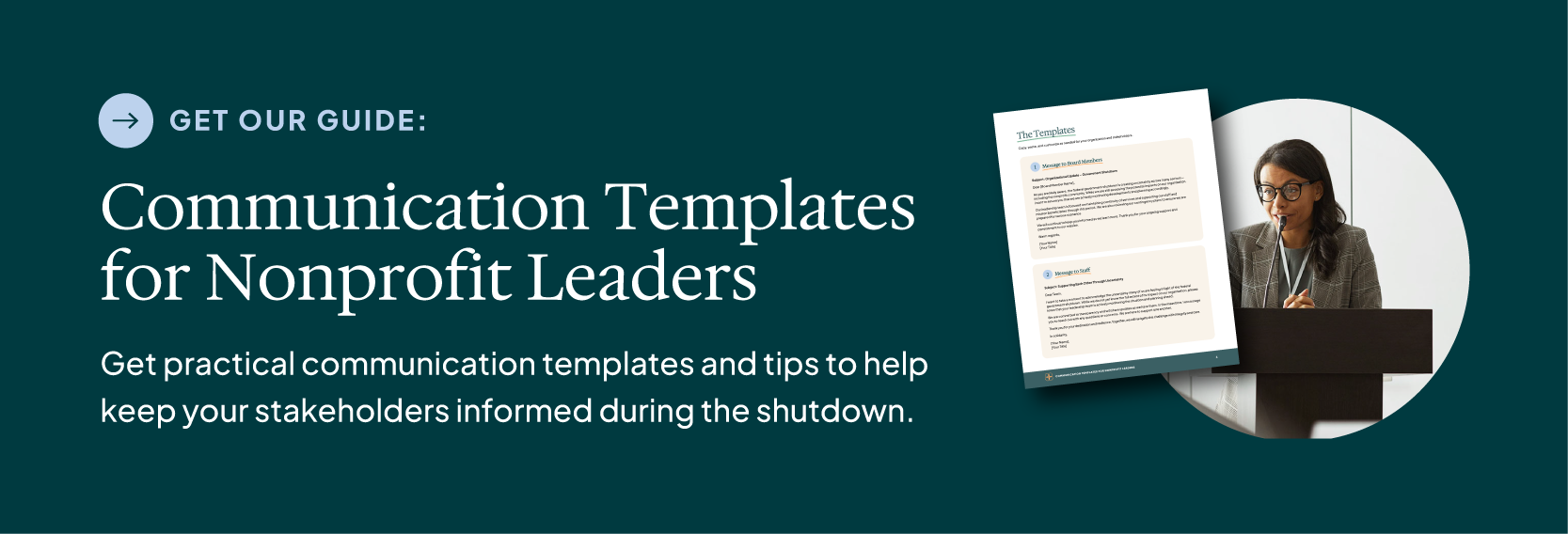Are We Going to Be Alright? How to Communicate When the Answer Isn’t Clear
Uncertainty has become the new normal across the nonprofit sector. Federal funding freezes, agency reorganizations, and proposed cuts to essential programs like Medicaid and SNAP are creating a ripple effect of concern. Organizations serving survivors of domestic violence, people with disabilities, students, and those in need of mental health support are all feeling the pressure. And so are the people they serve.
One of our board members recently asked, “Are we going to be alright?” That simple question captures the anxiety many are feeling right now.
It’s a question echoing across boardrooms, staff meetings, and community gatherings. In moments like these, leadership isn’t just about having the answers—it’s about showing up, staying grounded, and communicating with clarity and care.
Why Communication Matters Now More Than Ever
The COVID-19 pandemic taught us that in times of crisis, people look to leadership not just for solutions, but for stability. They want to know someone is paying attention, thinking ahead, and doing everything possible to protect the mission and the people behind it.
Even when the path forward is unclear, communication builds trust. It reassures your team, your board, and your community that you’re engaged, informed, and committed to navigating the storm together.
“In times of uncertainty, people don’t expect you to have all the answers—they just need to know you’re paying attention.”
Here are five principles to guide your communication strategy during uncertain times:
1. Communicate Frequently—and with Everyone
Your stakeholders—staff, board members, funders, and community partners—want to hear from you. Regular updates, even brief ones, signal that you’re tracking developments and staying proactive. Use all available channels: email, video messages, social media, and in-person gatherings. A weekly rhythm can help you stay consistent without becoming reactive.
2. Stay Grounded, Not Reactionary
You don’t need to respond to every headline or policy shift in real time. Take a breath. Let the dust settle. Then offer a thoughtful, contextualized update. A calm, measured tone helps cut through the noise and reinforces your role as a steady hand on the wheel.
3. Be Clear, Not Complicated
Don’t assume your audience is following every policy detail. Break down what’s happening in plain language. Focus on what it means for your organization and the people you serve. Avoid sensationalism. Instead, offer clarity, context, and credible sources. If misinformation is circulating, gently correct it. And if you’re still gathering facts, say so.
4. Lead with Transparency
You don’t need to have all the answers. In fact, acknowledging what you don’t know can build more trust than pretending you do. Share what you’re learning, what you’re watching, and how you’re preparing. Integrity is your most valuable asset in uncertain times—lean into it.
5. Offer Reassurance Through Action
Let your community see the steps you’re taking to respond. Whether it’s scenario planning, advocacy efforts, or internal adjustments, show that you’re not standing still. In a noisy environment, your calm, purposeful voice can be a source of comfort and confidence.
In Uncertainty, Be the Constant
Uncertainty is hard—but it’s also a chance to lead with authenticity, empathy, and strength. Clear, consistent communication doesn’t just steady your organization—it strengthens the trust that sustains your mission.
If you’re asking, ‘What’s next?’— you’re not alone. Let’s talk about how to prepare your organization for what may come.
Together, we are stronger.
If you’re interested in communication or need support in balancing your mission and business strategies, we’re here to help.
Mission + Strategy is an invested thought partner to your nonprofit organization. Through our Strategic Advising, Mergers & Partnerships, and Shared Back Office service solutions, we help nonprofits achieve alignment between their mission and business strategies.











